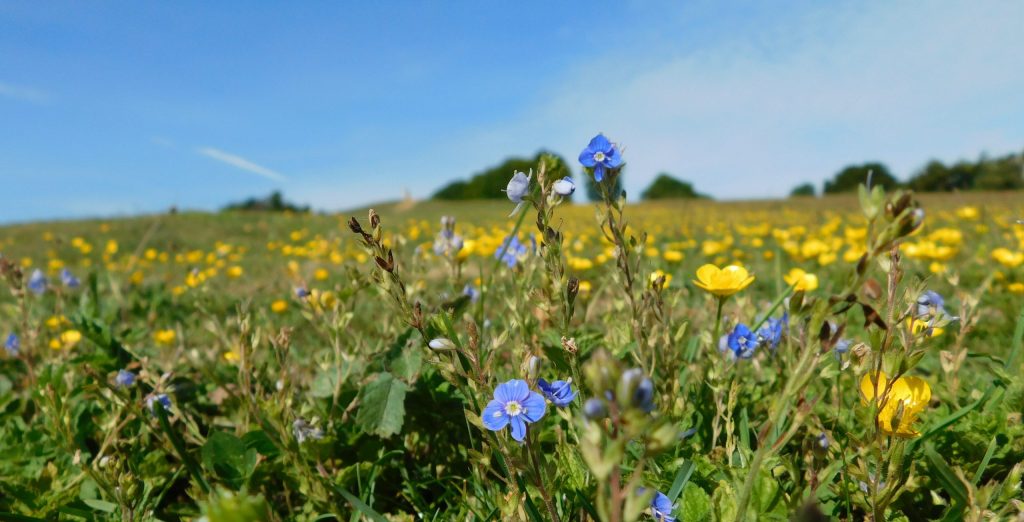Greater Ambition Needed For England’s Protected Sites and Species
Yesterday we submitted our response to the Government’s consultation on the Nature Recovery Green Paper. The paper sets out initial proposals for reforms of protected sites and species, how we will achieve the 30×30 target, financing of nature’s recovery, and mutes a large-scale reform of Defra’s arms-length bodies such as Natural England.
A green paper is a chance to test the waters and set out ambitious action, but unfortunately this one doesn’t hit that mark. Here we highlight some key messages from our response:
Protected sites and species
We support adjustments to the designation and protected species systems in England, providing they are used to level-up protection and shift focus towards recovery of nature. However, the options given for protected sites seem to constitute a reduction or simple relabelling in protection. Instead of relabelling, reforms for protected sites should focus on ensuring management to get them all into good condition, completing the protected sites network, and using the Lawton Principles (more, bigger, better and joined up sites) to extend the network. As such, we are pleased to see the suggestion in the Green Paper to make Site Improvement Plans statutory.
Species are still declining across England. We need more widespread and better protections for species and a shift of emphasis from protection to recovery of species. The Green Paper focuses on process and simplification of species legislation, without any wording or ideas for improving the effectiveness of species legislation. Instead of rebranding and weakening protections, the Government should bring forward proposals for species recovery. For example, a key gap in current protections is the direct protection of core or key foraging habitat. Currently only the most highly protected have habitat protection tied to them. Habitat is essential for species protection. For some species, it may be appropriate to extend protection to such foraging habitat to ensure their conservation and recovery.
The Nature Recovery Green Paper also proposes to “fundamentally change” the UK’s most effective conservation laws, the Habitats Regulations. We must retain the essential aspects of the Habitats Regulations, including the precautionary principle, existing site protection rules, case law, a robust legal assessment framework, and obligations for site management. We recommend better support and resourcing of SNCOs and LPAs, and to issue/commission additional guidance as necessary, rather than to reform the Habitats Regulations.

Danebury Hillfort SSSI, Hampshire. Photo: Amber Connett ACIEEM
30×30
The 30×30 target of protecting at least 30% of England’s land by 2030 is not a ceiling but a minimum achievement required to put England’s habitats and wildlife into recovery. We welcome the Government’s recognition that National Parks and Areas of Outstanding Natural Beauty would not count towards the 30×30 target without reforms of their current management and purposes.
Despite covering >30% of the sea area, we question whether, given continued licensing of activity in marine protected sites, existing sites are adequate and protected to meet requirements of an effectively managed, ecologically coherent network of protected areas.
Reform of arms-length bodies (ALBs)
Now is the wrong time to be considering large-scale reform of Defra’s ALBs. What we need now is better communication and collaboration between the bodies, oversight from Defra, funding and enforcement. The ALBs are essential and each have important roles. Institutional improvement could be made by setting nature’s recovery—and in particular the achievement of statutory nature and climate targets—as statutory purposes for all Defra’s ALBs.
Financing nature’s recovery
Increased and sufficient public investment is needed to fulfil statutory obligations, such as improving the condition of statutory protected sites to meet favourable conservation status and protected landscapes, and meet statutory environmental goals. For these obligations, we cannot rely on private finance through mechanisms such as BNG. However, growing private finance will also play a key role and one source must not crowd out the other, so long as it is in addition to sufficient public finance for statutory obligations and well-regulated. Robust monitoring and accounting will be crucial.
On the Green Paper, Chair of our Strategic Policy Panel, Ben Kite CEcol MCIEEM said:
There are some ideas in the green paper that have real merit – such as the suggestion that Site Improvement Plans for designated sites might be given a statutory status, but in the main the proposals are disappointing and amount to an exercise in relabelling and ‘streamlining’ that lacks ambition and doesn’t seem actually to be focused on the ultimate goal of nature recovery. The proposed options set out for designated site tiering appear to enable future backsliding from existing levels of protection and introduce a worrying new political dimension to the hitherto mainly scientific process of selecting designated sites. The Government must think again and improve upon the proposals in the green paper if it is serious about halting biodiversity loss.
